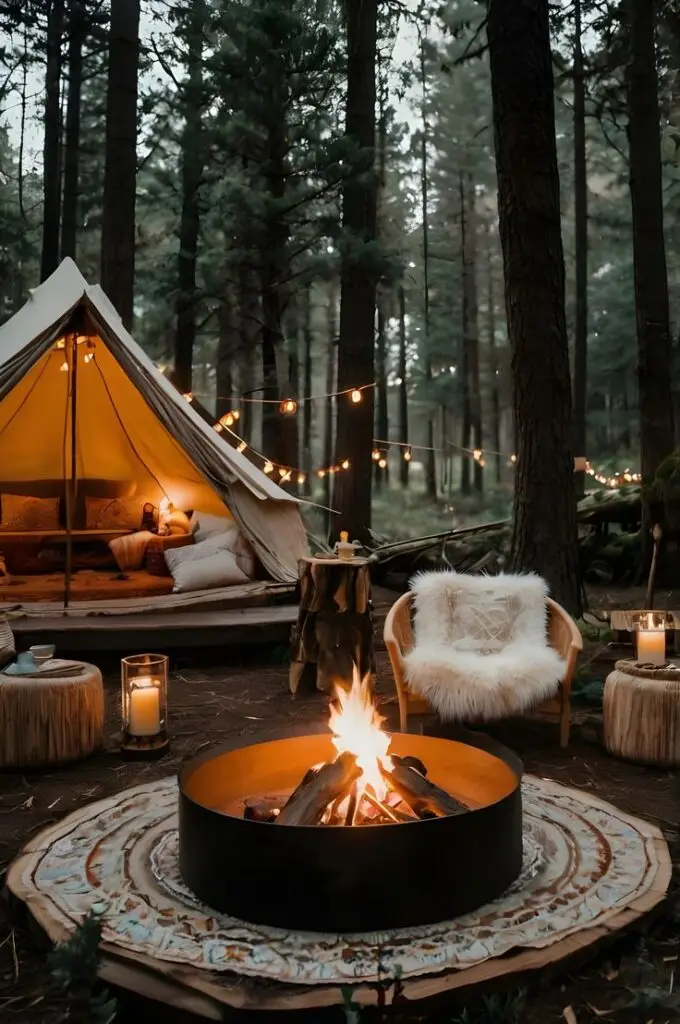Winter camping offers a unique opportunity to connect with nature in a quieter, pristine environment. Many outdoor enthusiasts find that the cold season presents both challenges and rewards that can enrich their experience. By following essential winter camping tips, you can ensure a safe and enjoyable adventure in the great outdoors.
Preparing for winter camping requires a different approach compared to warmer weather excursions. Understanding the necessary gear and safety measures is crucial to navigating and embracing the cold. Knowledgeable preparation can significantly enhance your comfort and enjoyment while winter camping.
1) Layer up with moisture-wicking clothing
When winter camping, staying warm and dry is crucial. Moisture-wicking clothing helps manage sweat, drawing moisture away from your skin. This prevents you from getting cold once you stop moving.
Start with a base layer made from synthetic materials or merino wool. These materials are ideal for regulating body temperature and keeping you dry. Avoid cotton, as it retains moisture and can chill you in cold conditions.
Next, add an insulating layer like fleece or down. This layer traps heat, keeping you comfortable in low temperatures. You can then finish with a waterproof and windproof outer layer to protect against the elements.
Pay attention to your extremities, too. Wear moisture-wicking socks and gloves to maintain warmth in your feet and hands. Consider wearing a hat, as a significant amount of body heat can escape through your head.
By layering effectively with moisture-wicking fabrics, you set yourself up for a more enjoyable and safe winter camping experience. Staying dry is essential for maintaining warmth and preventing hypothermia.


2) Invest in a high-quality sleeping bag
Choosing the right sleeping bag is crucial for winter camping. A high-quality sleeping bag will keep you warm and comfortable during chilly nights.
Look for a bag rated for cold weather, ideally with a temperature rating lower than the expected overnight lows. Down insulation is lightweight and packs down small, while synthetic materials perform better in wet conditions.
Ensure the sleeping bag fits you well. A snug fit minimizes heat loss, while extra space can make it harder to stay warm. Consider features like draft collars and hoods that trap warmth.
Select a bag with appropriate size and weight for your adventures. A heavier bag may offer more warmth but can add to your pack weight.
Investing in a reputable brand can ensure better materials and construction, enhancing durability and warmth retention. Taking the time to research and select the right sleeping bag will significantly improve your winter camping experience.


3) Use an insulated sleeping pad
An insulated sleeping pad is crucial for winter camping. It provides a barrier between you and the cold ground, preventing heat loss.
Choose a pad with a high R-value. This rating indicates the pad’s insulation effectiveness. The higher the R-value, the better it insulates against cold temperatures.
Look for pads made from materials that resist heat transfer, such as closed-cell foam or insulated air pads. These materials trap air and create an effective thermal barrier.
Consider the thickness of the pad. A thicker pad can offer more comfort and insulation. However, ensure it still fits well in your tent and doesn’t add unnecessary weight to your pack.
Another feature to look for is a built-in pump for inflation. This can help minimize the loss of warmth while setting up your sleeping area.
Using an insulated sleeping pad enhances your comfort level when camping in the cold. A good night’s sleep is essential for enjoying your winter adventure.


4) Pack plenty of high-calorie snacks
When winter camping, your body burns more calories to stay warm. Packing high-calorie snacks ensures you have enough energy throughout your trip.
Choose options that are easy to carry and require minimal preparation. Nuts, energy bars, and dried fruits are excellent choices. These items provide quick energy and are lightweight.
Additionally, consider protein-rich snacks like jerky or cheese. These will help keep you feeling full longer.
Don’t forget about carbohydrates; they are crucial for sustained energy. Granola or trail mix can provide a good balance of macronutrients.
Having a variety of snacks on hand can help prevent boredom. Rotate flavors and textures to keep your meals interesting. This approach can also make it easier to consume more calories.
Be mindful of how much you pack. Ensure you have enough for each day, including some extra for unexpected delays.


5) Keep hydrated with insulated bottles
When winter camping, hydration is crucial. Cold air can be deceptive, often leading you to believe you are not thirsty. In reality, your body still requires water.
Using insulated bottles helps maintain the temperature of your beverages. Hot drinks can provide warmth, while cold drinks are refreshing. Insulated bottles prevent freezing and keep your liquids at a drinkable temperature.
Consider bringing a variety of liquids. Water is essential, but herbal teas or electrolyte drinks can offer additional benefits. These options can help replenish lost minerals and keep you energized.
Remember to drink regularly. Set reminders or create a routine to ensure you stay hydrated throughout the day. Don’t wait until you feel thirsty, as this can lead to dehydration.
When selecting insulated bottles, choose ones that are durable and easy to carry. Features such as a wide mouth for easy filling and cleaning can be beneficial. Ensure the lid seals securely to prevent spills while you are active.


Understanding Winter Camping Challenges
Winter camping presents unique challenges that require careful consideration and preparation. Being aware of weather conditions and selecting the right shelter can significantly impact your experience.
Weather Conditions and Preparation
Winter weather can change rapidly, with temperatures often dropping unexpectedly. Always check the forecast before you head out.
Key factors to consider:
- Temperature: Understand the expected lows. Prepare for possible extreme cold conditions.
- Precipitation: Snow can accumulate quickly, affecting visibility and safety.
- Wind: Wind chill can make it feel much colder, increasing the risk of frostbite.
Packing appropriate gear is crucial. Include insulated clothing, waterproof outer layers, and warm accessories like hats and gloves. Create a checklist to ensure you have essentials like food, water, and emergency supplies.
Appropriate Shelter Selection
Choosing the right shelter is vital for your comfort and safety during winter camping. Your options typically include tents, cabins, or hammocks.
Consider these points:
- Insulation: Look for tents with good insulation properties to retain heat. Four-season tents are specifically designed for harsh conditions.
- Site Selection: Choose a campsite that offers natural windbreaks, such as trees or hills, to shield your shelter from harsh winds.
- Setup: Ensure your shelter is properly anchored against snow and wind. Familiarize yourself with setup techniques before heading into extreme conditions.
By focusing on these challenges, you can create a more enjoyable and safe winter camping experience.
Safety Measures
Prioritizing safety while camping in winter conditions is crucial. You should be aware of hypothermia risks and understand fire safety to ensure a secure experience.
Dealing with Hypothermia
Hypothermia can occur when your body loses heat faster than it can produce it. Recognizing early symptoms is key: shivering, confusion, and fatigue.
To prevent hypothermia, dress in layers. Start with moisture-wicking base layers, followed by insulating layers, and finish with a waterproof and windproof outer layer. Your extremities lose heat quickly, so ensure you wear wool or insulated gloves, hats, and socks.
If someone shows signs of hypothermia, move them to a warmer location and remove wet clothing. Provide warm, non-caffeinated drinks and blankets to help raise body temperature. Act quickly; in severe cases, seek medical attention immediately. Have a plan for emergencies, including a means to contact help if needed.
Fire Safety and Heat Sources
Fires can provide essential warmth but come with risks. Always follow local regulations regarding open fires.
Choose a safe location, away from overhanging branches and flammable materials. Clear the area of debris before starting your fire. Use a fire ring to contain the flames. Gather firewood in advance; use dry and seasoned wood for the best burn.
When using portable heaters or stoves, ensure they are designed for outdoor use. Always have a CO detector if using fuel-burning equipment indoors or in tents. Keep a bucket of water or sand nearby to extinguish any flames if they get out of control. Make sure to fully extinguish fires before leaving the site, ensuring no embers remain.
- 161shares
- Facebook0
- Pinterest161
- Twitter0


